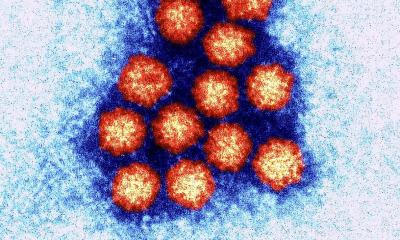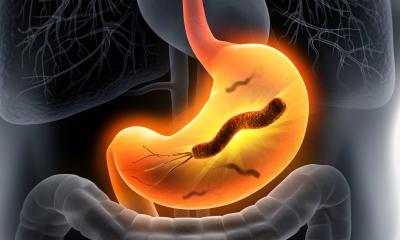New study: Alcohol harms the brain immediately
A nice drink cannot do any harm? Brain says no. A new study by a Chinese research group shows that even low doses of alcohol can harm the brain immediately though not permanently. “We were investigating the acute effects of low and high doses of alcohol by diffusion tensor imaging, wondering whether the consequences of alcohol administration can be observed by the measurement of apparent diffusion coefficient (ADC) and fractional anisotropy (FA)”, said Dr. Lingmei Kong (Shantou University Medical College, China) at the 21st Annual Meeting of the European Neurological Society (ENS) in Lisbon.

They could. The participants of the study did not only show reactions in their behaviour. The research group could also show that frontal lobes and thalamus are more vulnerable to the effects of acute alcohol consumption. And: DTI is capable to detect changes in the brain after acute alcohol consumption not visible on conventional MRI. More than 3.200 neurological experts from around the world are currently discussing the latest developments in all areas of their specialty in the Portuguese capital.
For the study the Chinese research group looked at healthy young men and women aged between 20 and 35 years. The volunteers were divided into three groups randomly: a placebo group, a low dose group and a high dose group. The effect of the alcohol consumption was investigated by MR. Conventional MR imaging consisted of spin-echo T1-weighted imaging and T2-weighted imaging. Diffusion weighted imaging (DTI) was performed in participants before and 0,5, 1, 2, 3 and 4 hours after the alcohol consumption using spin-echo echo-planner sequence. The regions of interest were placed on the frontal white matter, internal capsule, external capsule and precentral gyrus, postcentral gyrus and thalamus.
The effects of low and high doses of alcohol
Even a low dose of alcohol (0, 45 grams of alcohol per kilogram bodyweight) changed mood and behaviour of the participants. They were in a depressed mood, had increased speech, showed signs of excitement and suffered from headache and dizziness.
The test persons that had been given a high dose of alcohol (0,65 gram of alcohol per kilogram bodyweight) showed reactions like headache, dizziness, nausea, depression, and obfuscation. They had problems to coordinate and control their movements (ataxia).
Making drunkenness visible
“Using conventional MR imaging we could not see any abnormality in any test person, but with DTI we could”, Dr. Lingmei Kong explained. DTI is a recent application of MRI based on measurement of the Brownian motion of water molecules. It can provide information about brain microstructure by quantifying isotropic and anisotropic water diffusion. This is expressed in terms of two main parameters: FA, which is a measure of the directionality of diffusion, and ADC, which reflects overall diffusivity. DTI has been used to detect white matter pathology in humans and experimental animal models of neurological diseases such as multiple sclerosis. Changes in the ADC should thus be interpreted in terms of changes in the diffusion coef?cient of the extracellular space and in its fractional volume relative to the intracellular volume.
“ADC values in the frontal lobe and the thalamus tended to decrease in both groups half an hour after acute alcohol consumption”, said Dr. Lingmei Kong. The ADC values showed significant changes reaching a minimum value at one hour followed by a gradual recovery in both low and high dose groups, and reached to be normal after four hours. There were significant differences between the ADC values in frontal lobe and thalamus between both alcohol groups and the placebo group, but no difference between the two alcohol groups. “Bad news for those who love to have a glass or two – even a small amount of alcohol is like a punch to the brain. Frontal lobes and thalamus are especially vulnerable to the effects of beer, wine, and other alcoholic drinks”, Dr. Lingmei Kong concluded. But, to console those who enjoy a glass sometimes: “The recovery of DTI parameters (ADC and FA values) within 3 to 4 hours after drinking may indicate that both low and high dose of alcohol can affect the function of brain temporary but not damage it irreversibly”.
Background: Amounts of alcohol used in the study
0, 45 gram of alcohol per kilogram bodyweight is equivalent to:
person of 50 kg weight: 2 small glasses of beer at 0,3 litre, 4,9 % vol. alc.
person of 60 kg weight: 3 glasses of champagne at 0,1 litre, 11 %vol. alc.
person of 70 kg weight: 5 glasses of vodka at 0,02 litre, 40 % vol. alc.
person of 80 kg weight: 2 glasses of wine at 0,2 litre, 11% vol. alc.
0,65 gram of alcohol per kilogram bodyweight is equivalent to:
person of 50 kg weight: 5 glasses of vodka at 0,02 litre, 40 % vol. alc.
person of 60 kg weight: 3 small glasses of beer at 0,3 litre, 4,9 % vol. alc.
person of 70 kg weight: 5 glasses of champagne at 0,1 litre, 11 %vol. alc.
person of 80 kg weight: 3 glasses of wine at 0,2 litre, 11% vol. alc.
Source: ENS Abstract P796 Study of diffusion in human brain after acute alcohol consumption
31.05.2011










